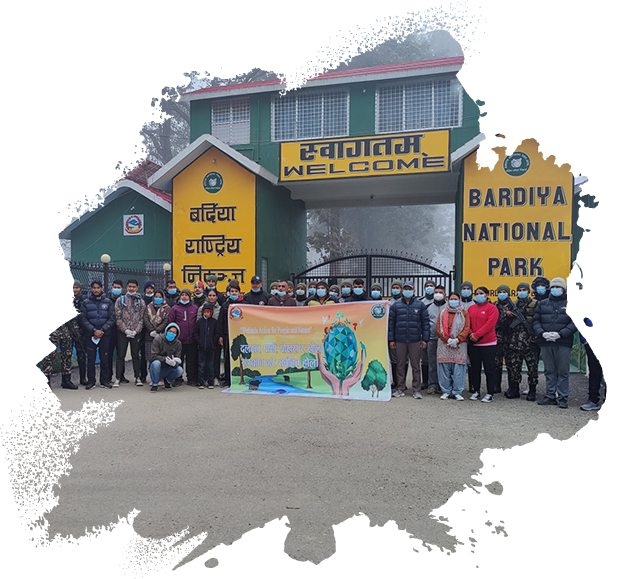


The park is known for its rich floral diversity. It contains diverse ecosystems ranging from tall alluvial floodplain grassland of early successional stage to climax stage sal forest established on uplands. A vegetation study conducted by Dinerstein (1979) classified six major vegetation types. Jnawali and Wegge (1993) later modified this into seven major vegetation types. Sharma (1999) has classified the vegetation of southwestern section of the park into 15 different microhabitats. Major vegetation types found in the park are summarized below:
Sal Shorea robusta forest makes above 70% of the forest cover in the park and grows on well-drained uplands. S. robusta, Terminalia sps., Buchanania latifolia, Carrya arboria and DileniSal Shorea robusta forest makes above 70% of the forest cover in the park and grows on well-drained uplands. S. robusta, Terminalia sps., Buchanania latifolia, Carrya arboria and Dilenia pentagyna are common species found in this vegetation type.
Khair-sissoo forest is established on relatively old floodplain and consist of Dalbergia sissoo and Acacia catechu as dominating tree species. Other tree species found in this association include Ehretia laevis, Trewia nudiflora and Mallotus philippinensis. Murraya koinigii, Callicarpa macrophylla and Colebrookia opposotofolia are important shrub species that form dense under story cover.
Moist riverine forest extends along watercourses. Syzigium cumini, Mallotus philippinensis, Ficus glomerata, Trewia nudiflora, and Dalbergia sissoo are among commonly found tree species in this type of vegetation. The ground is relatively open and contains human soil. Climbing palm Calamus tanusi and Karot (Teliacora sps), both climbers are indicator species of moist riverine forest.
Mixed hardwood forest grows in well-drained areas. Adina Cordifolia, Casearia tomentosa, lagerstroemia parviflora and Mitragyna parviflora are among tree species found in this type.
Wooded grasslands are similar to Savanna type where ground vegetation is dominated by grass species with sparsely distributed tree species. Common grass species found in this vegetationtype are Saccharum spontaneum, Imperata cylindrica and Saccharum bengalensis, Desmostachia bipinnata and Vetiveria zizanoides. Sparsely distributed tree species include Bombax ceiba, M. phillippensis, A. cordifolia, Largerstroemia parviflora and Dalbergia sissoo.
Phantas are the open short grassland area on previously cultivated fields. Imperata cylindrica, Saccharum spontanum and Narenga perphrocoma are the dominating grass species in phantas. Baghaura and Lamkoili Phantas in the southwestern section, and Guthi, Shivpur, Sanosiri, Thulosiri and Chepang phantas are the typical example of this type.
Tall alluvial floodplain grassland grows on the riverbeds of Geruwa, Orai and Babai Rivers. The dominating species of these grasslands include Saccharum spontaneum, Saccharum bengalensis, Phragmites karka and arundax.